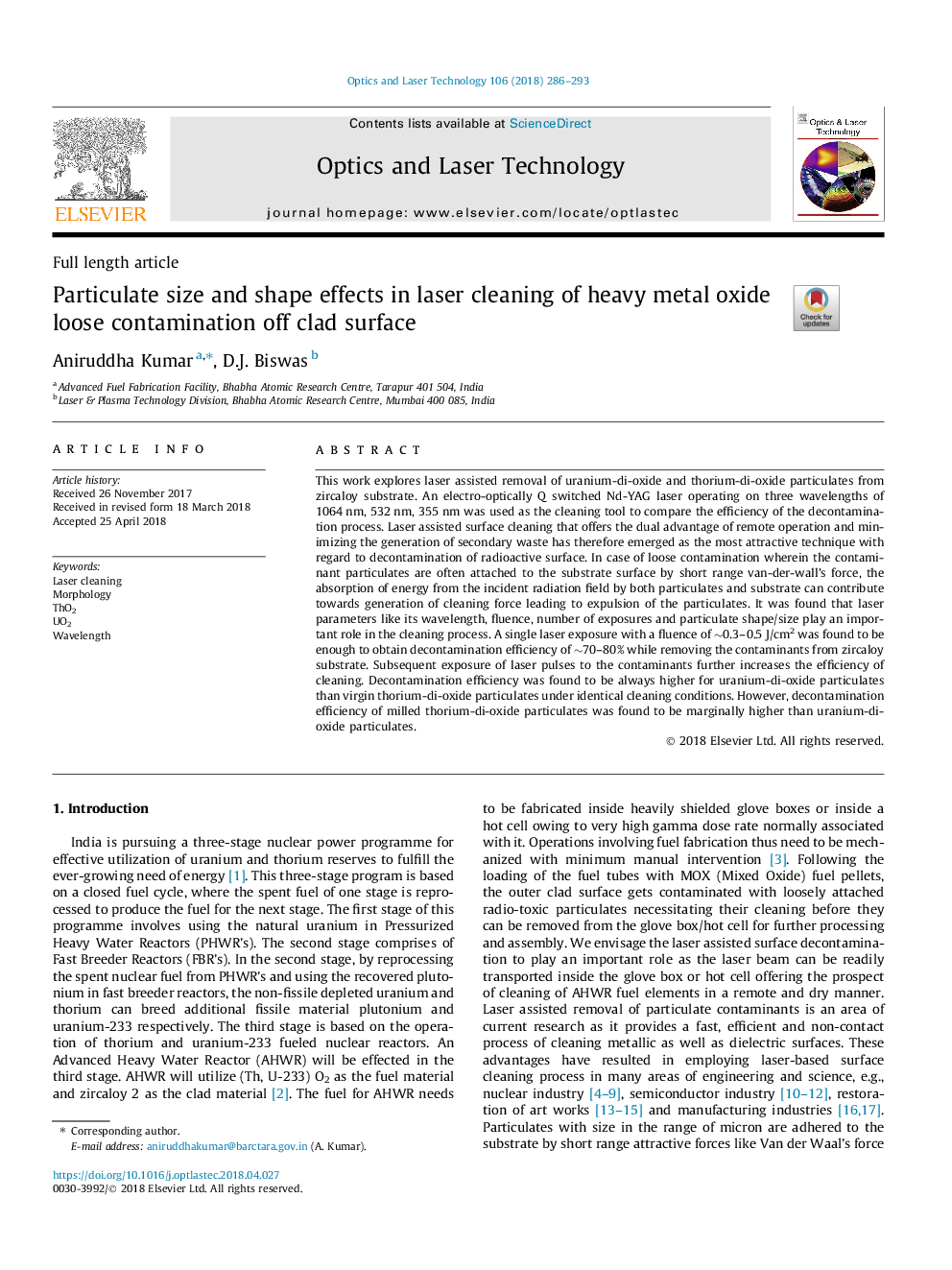| Article ID | Journal | Published Year | Pages | File Type |
|---|---|---|---|---|
| 7128551 | Optics & Laser Technology | 2018 | 8 Pages |
Abstract
This work explores laser assisted removal of uranium-di-oxide and thorium-di-oxide particulates from zircaloy substrate. An electro-optically Q switched Nd-YAG laser operating on three wavelengths of 1064â¯nm, 532â¯nm, 355â¯nm was used as the cleaning tool to compare the efficiency of the decontamination process. Laser assisted surface cleaning that offers the dual advantage of remote operation and minimizing the generation of secondary waste has therefore emerged as the most attractive technique with regard to decontamination of radioactive surface. In case of loose contamination wherein the contaminant particulates are often attached to the substrate surface by short range van-der-wall's force, the absorption of energy from the incident radiation field by both particulates and substrate can contribute towards generation of cleaning force leading to expulsion of the particulates. It was found that laser parameters like its wavelength, fluence, number of exposures and particulate shape/size play an important role in the cleaning process. A single laser exposure with a fluence of â¼0.3-0.5â¯J/cm2 was found to be enough to obtain decontamination efficiency of â¼70-80% while removing the contaminants from zircaloy substrate. Subsequent exposure of laser pulses to the contaminants further increases the efficiency of cleaning. Decontamination efficiency was found to be always higher for uranium-di-oxide particulates than virgin thorium-di-oxide particulates under identical cleaning conditions. However, decontamination efficiency of milled thorium-di-oxide particulates was found to be marginally higher than uranium-di-oxide particulates.
Related Topics
Physical Sciences and Engineering
Engineering
Electrical and Electronic Engineering
Authors
Aniruddha Kumar, D.J. Biswas,
